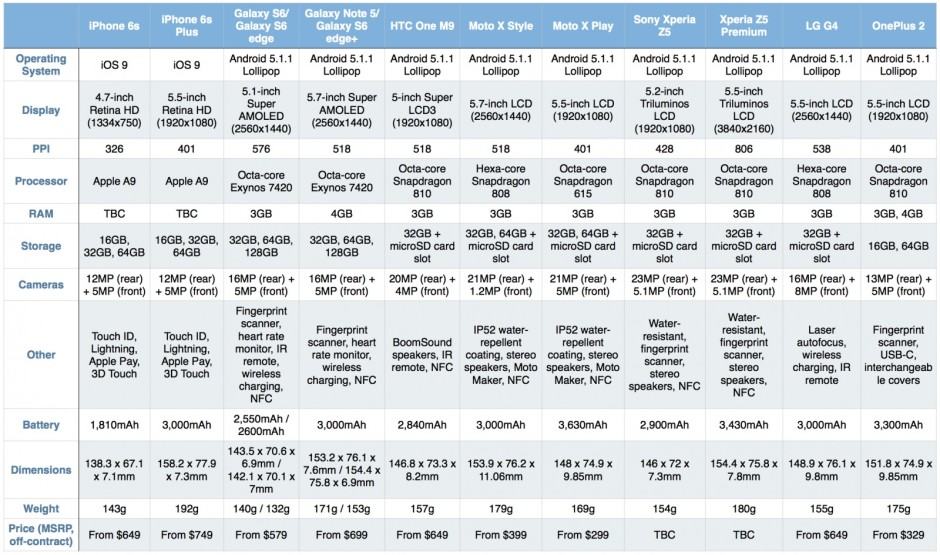How iPhone 6s stacks up against Android rivals

iPhone 6s has arrived. Photo: Apple
Despite being identical to their predecessors, iPhone 6s and iPhone 6s Plus are much-improved in almost every way. But do they have the specifications they need to take on the latest Android-powered smartphones we’ve already seen this year?
Find out in our comparison below, which compares Apple’s next-generation iPhones with rivals like the Galaxy S6 and S6 edge, the Moto X Style and Moto X Play, Sony’s new Xperia Z5, and more.
Click the table below to view it at full size.
Apple’s made some major changes to iPhone this year, with notable improvements in performance, a long-awaited iSight camera upgrade, and new features like 3D Touch. iPhone 6s and iPhone 6s Plus might look the same as their predecessors, then, but they’re much better smartphones overall.
Despite those upgrades, however, iPhone still looks like it’s lagging behind its rivals on paper in a few important areas, such as display resolution. It’s also thought that the new iPhones will have just 2GB of RAM — though that’s yet to be confirmed — which is twice as much as last year’s model, but only half as much as devices like the Galaxy Note 5 and the OnePlus 2.
Apple’s incredibly efficient software will make up for some of these things; iOS often outperforms rival Android devices with greater specifications because of that efficiency, and the iPhone takes better photos than many (though not all) Android handsets that have higher megapixel counts because of its image processing prowess. But software can’t make up for everything.
For many smartphone consumers, price is also an incredibly important factor.
You no longer have to pay $500+ for high-end specifications, with more affordable options from the likes of Motorola and OnePlus that are capable of challenging the very best from Apple and Samsung in terms of performance, display quality, and now camera quality, too. Why spend more on the fancier options when you can get a similar experience for $300 less?
Then there’s user experience: Specifications mean nothing if you’re committed to a particular platform, so to many smartphone users, it doesn’t matter that the Galaxy S6 has a Quad HD display, or that the Xperia Z5 is water-resistant — because they don’t run iOS.
Take specifications out of the equation, then, and there’s no question iPhone 6s has what it takes to compete with its Android-powered rivals; it’s been doing exactly that for years without chasing more CPU cores, higher megapixel counts, and greater pixel densities. It will excel at delivering a terrific user experience with what it has.
Will that user experience be better than that of Android? Well, that all depends on your preferences — and picking a platform is exactly where you should start first when choosing between these devices.



